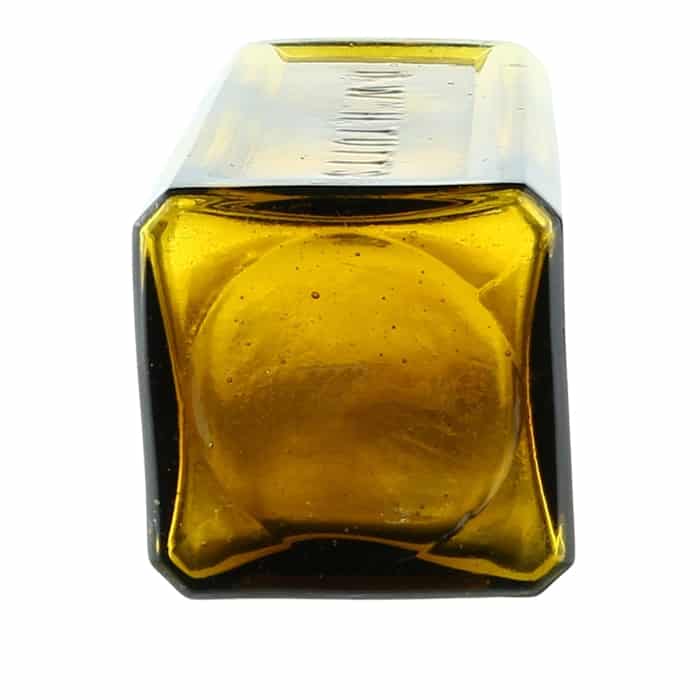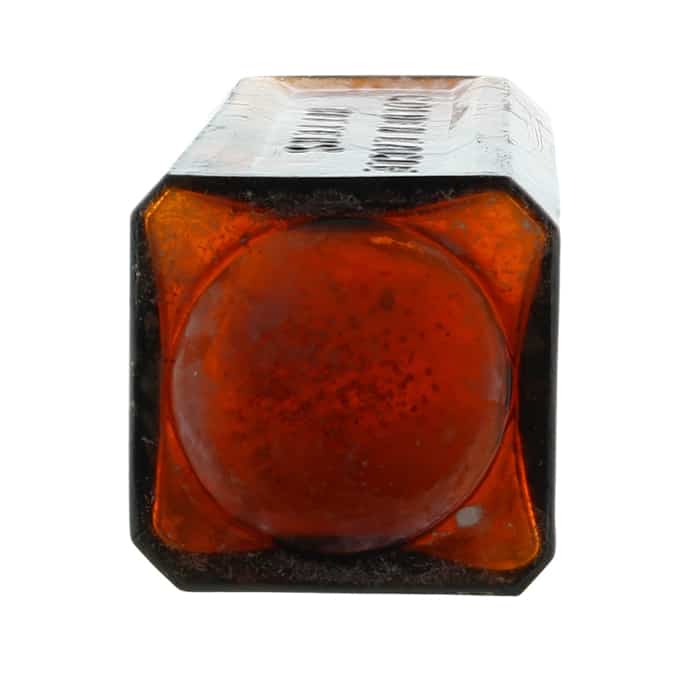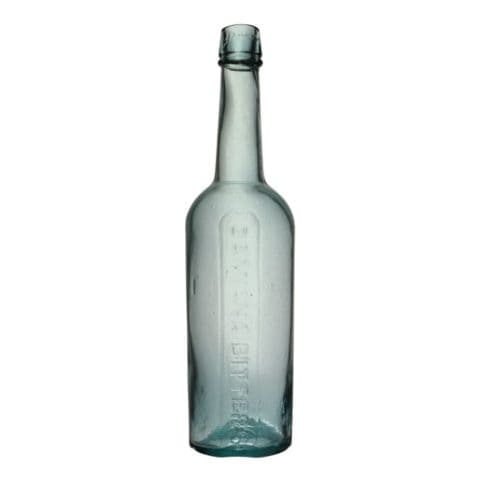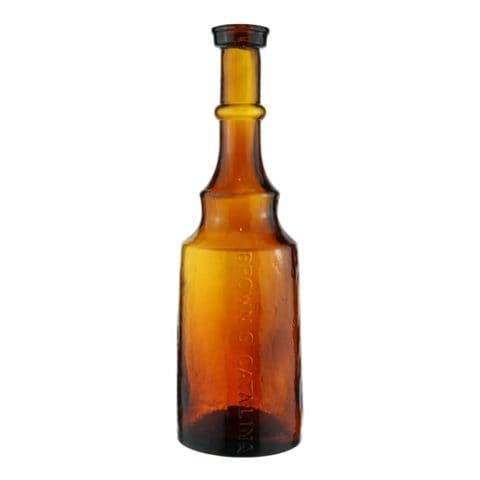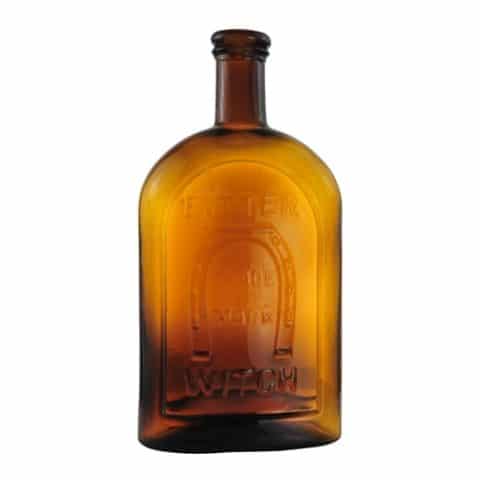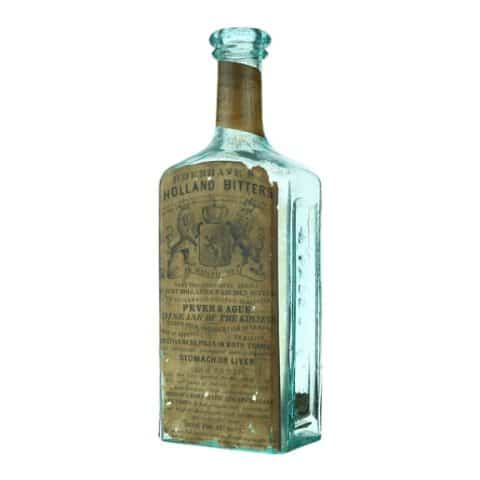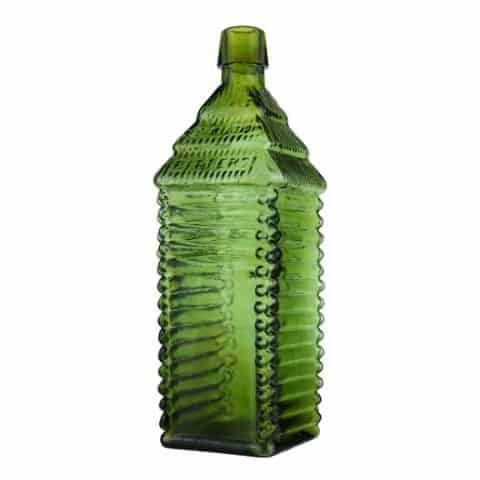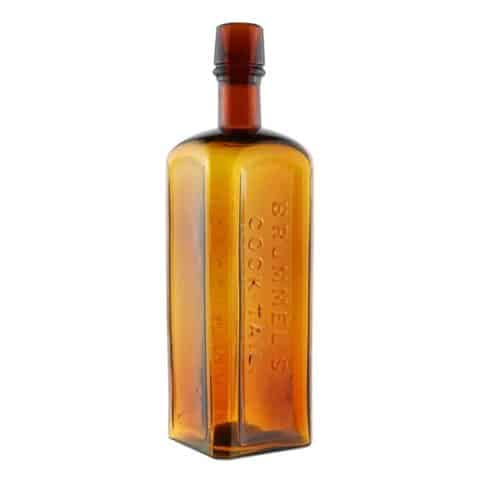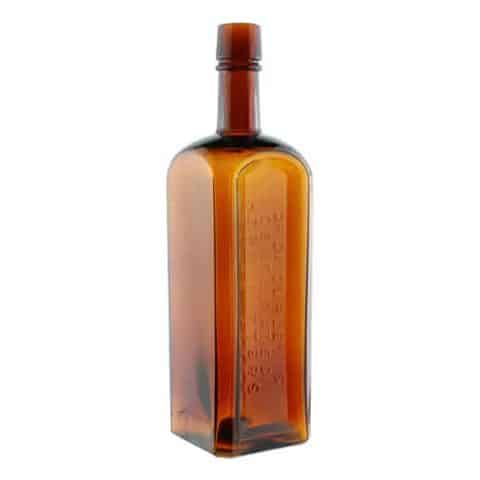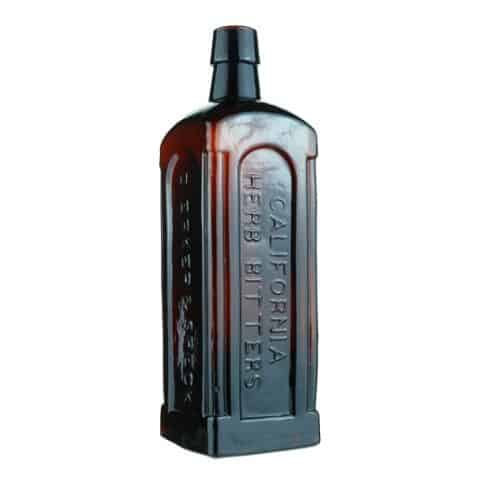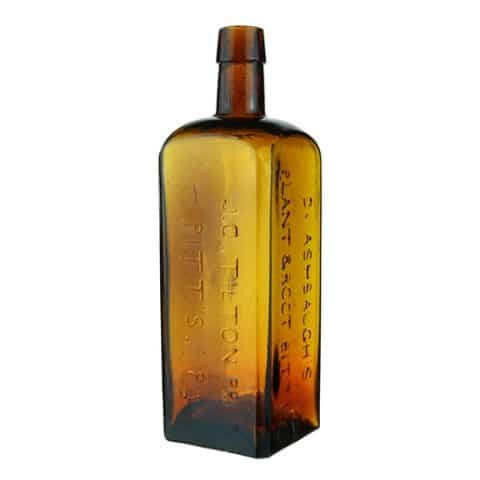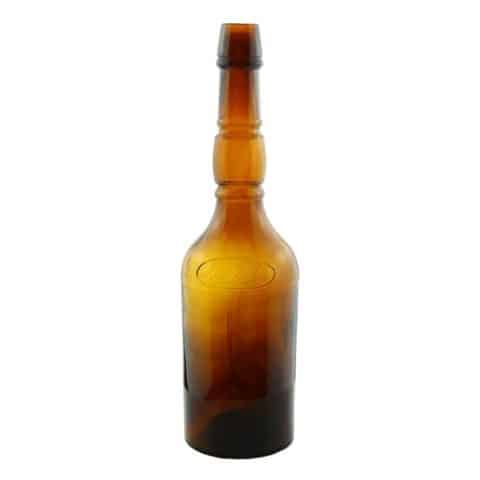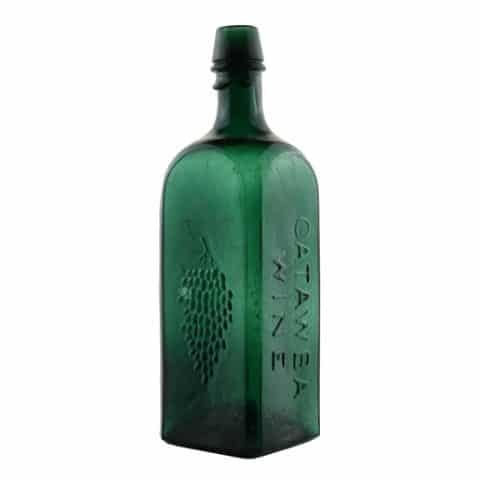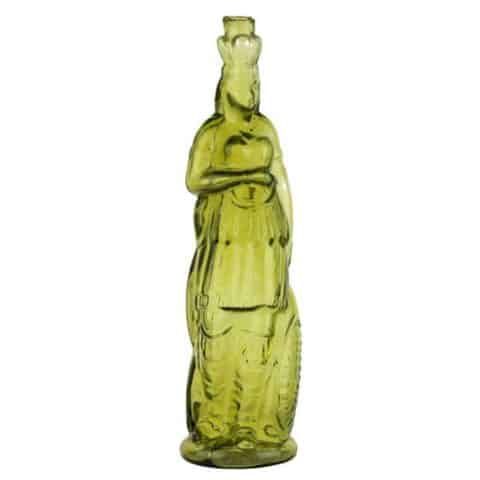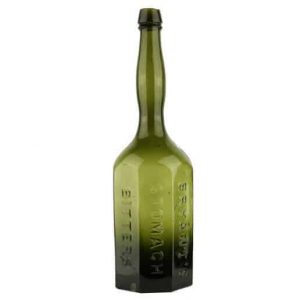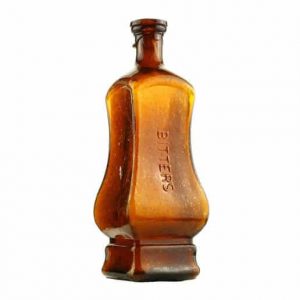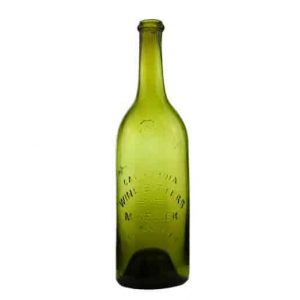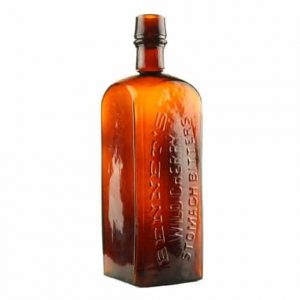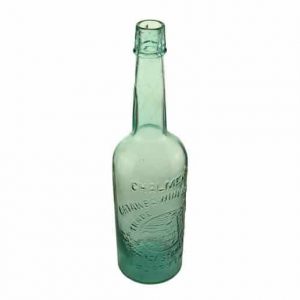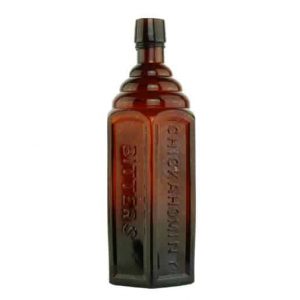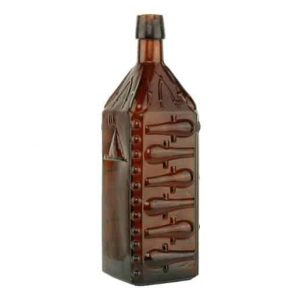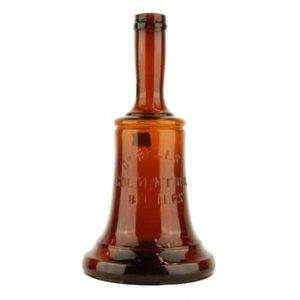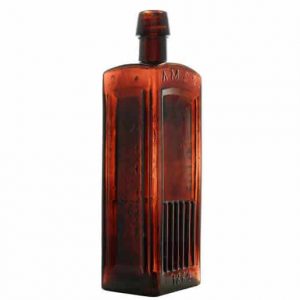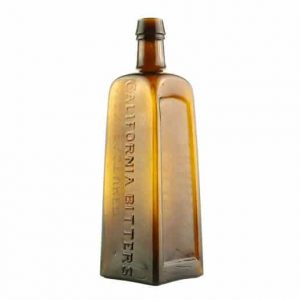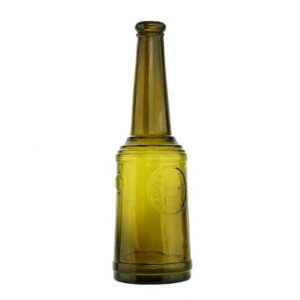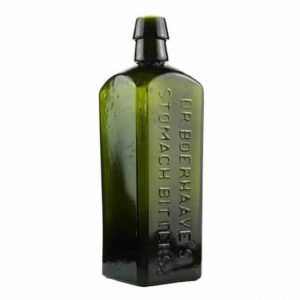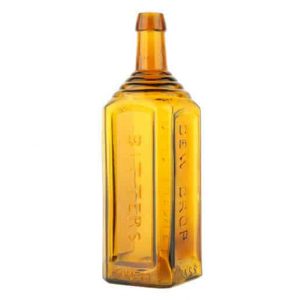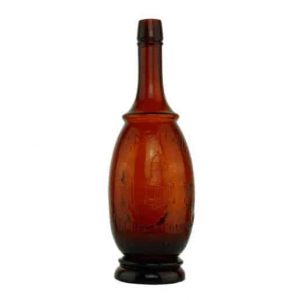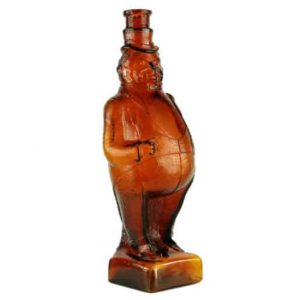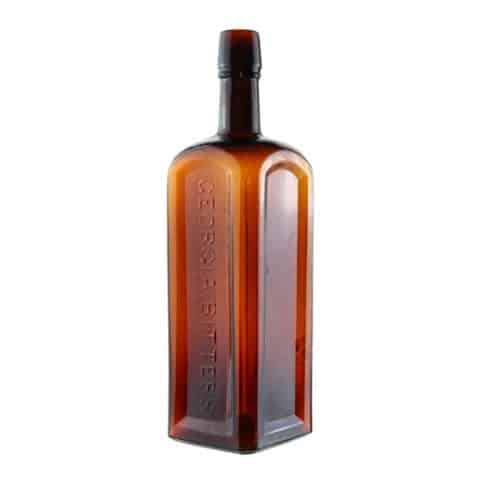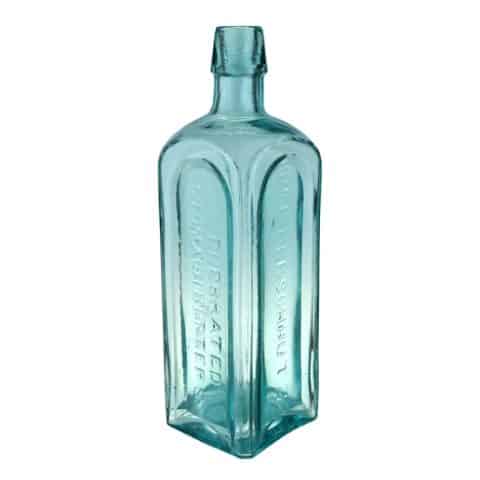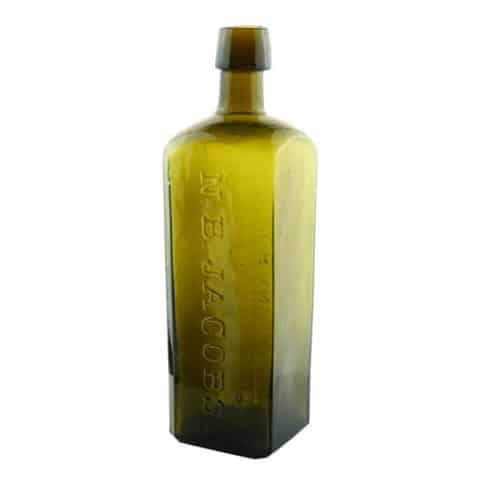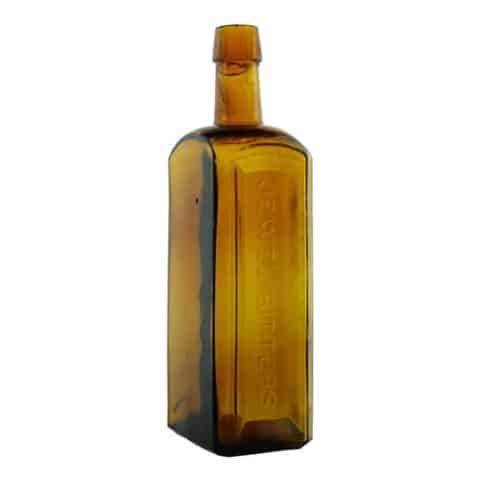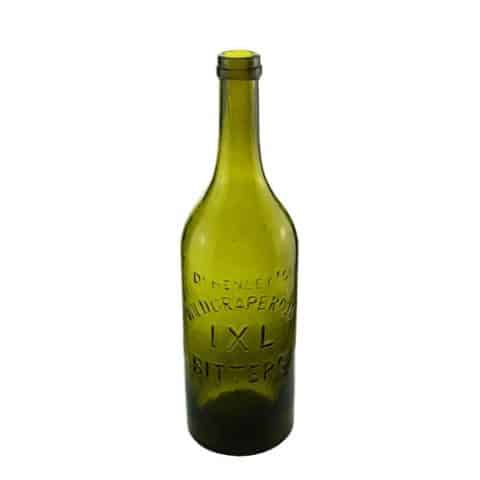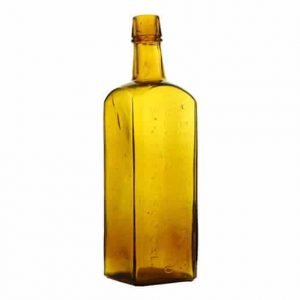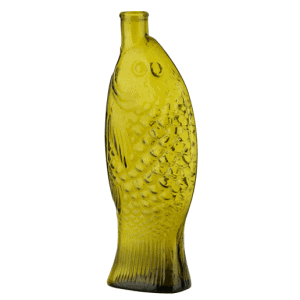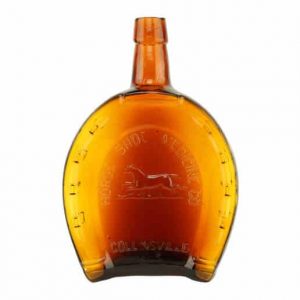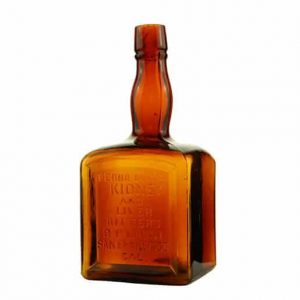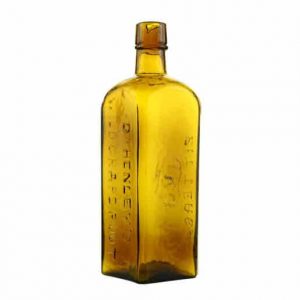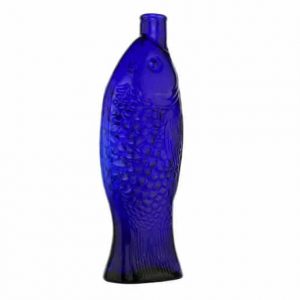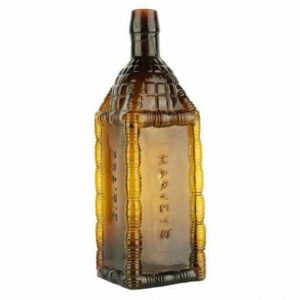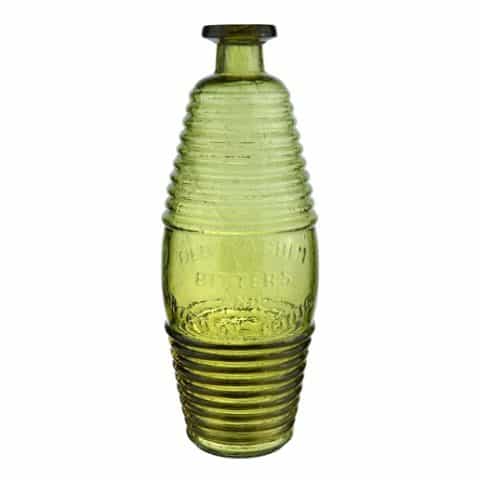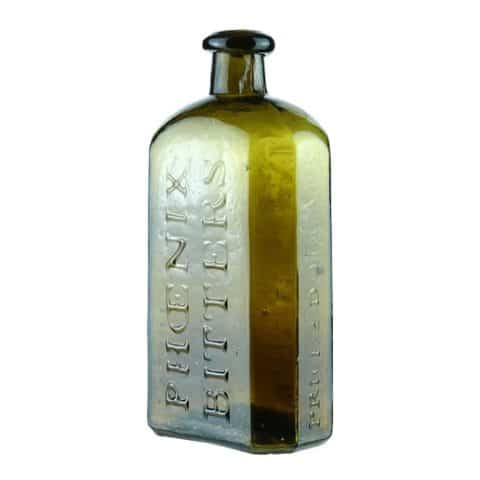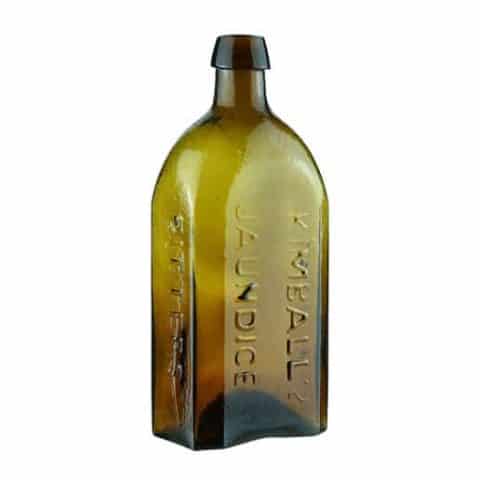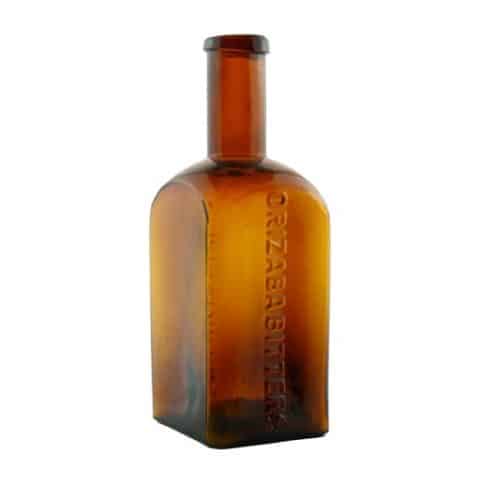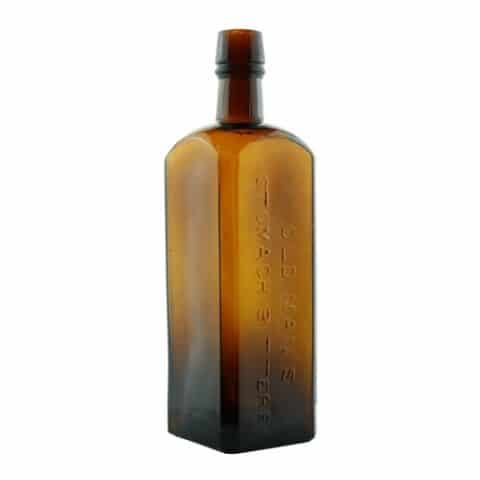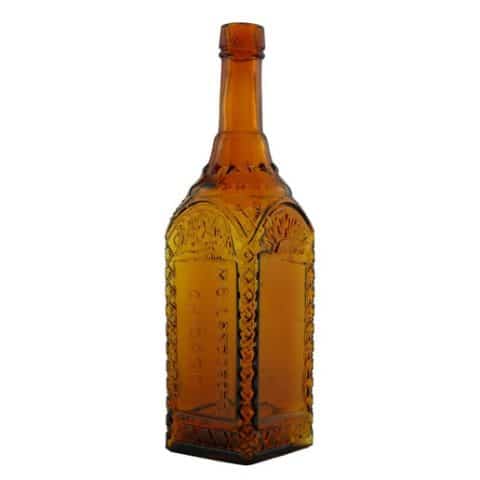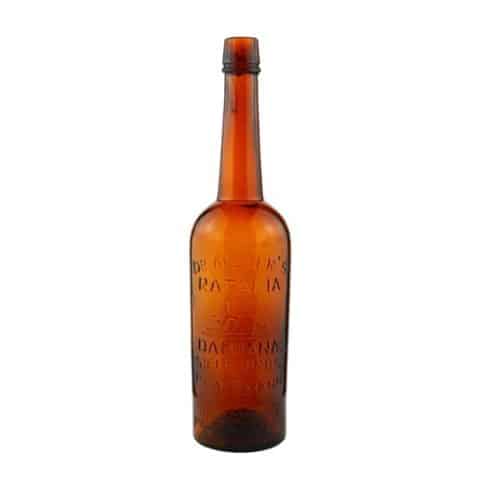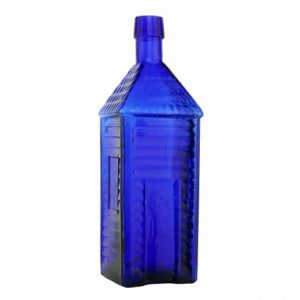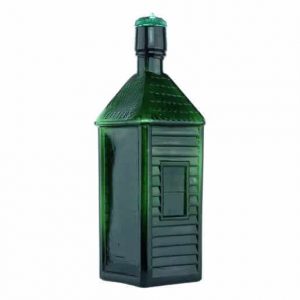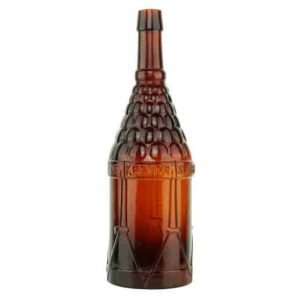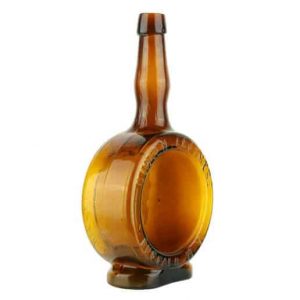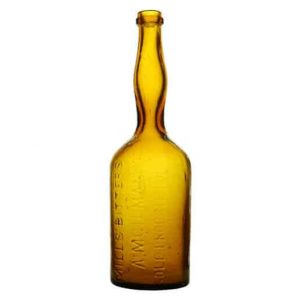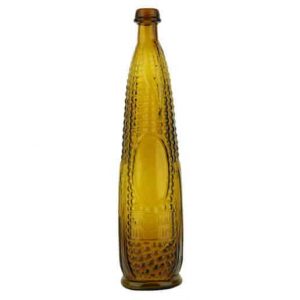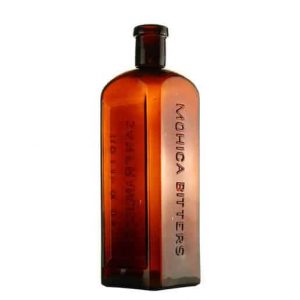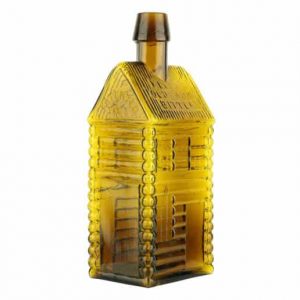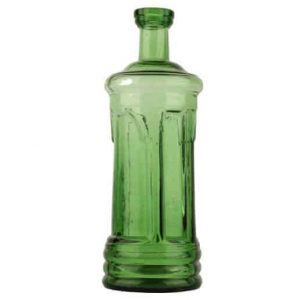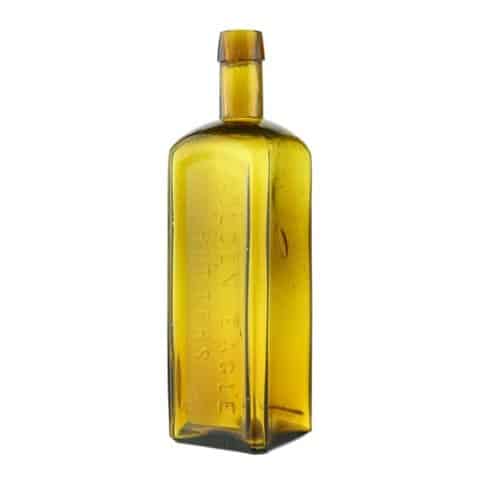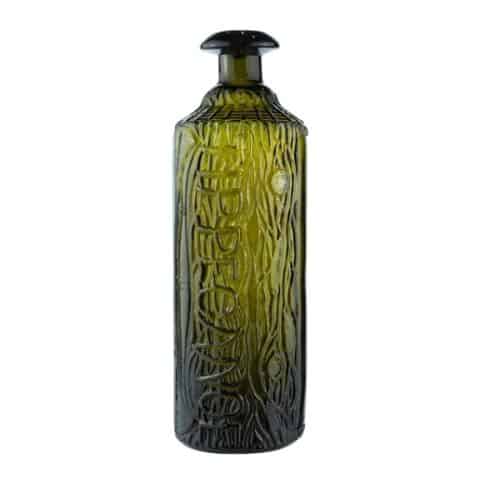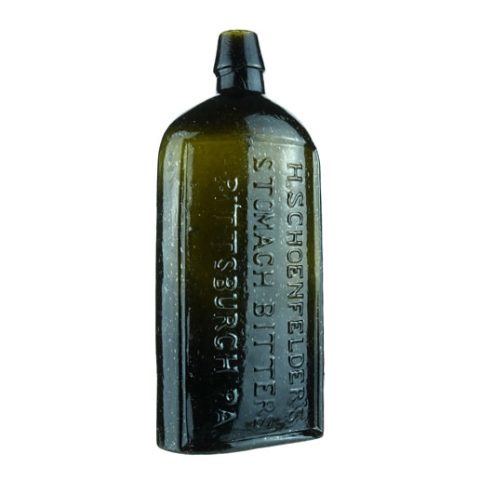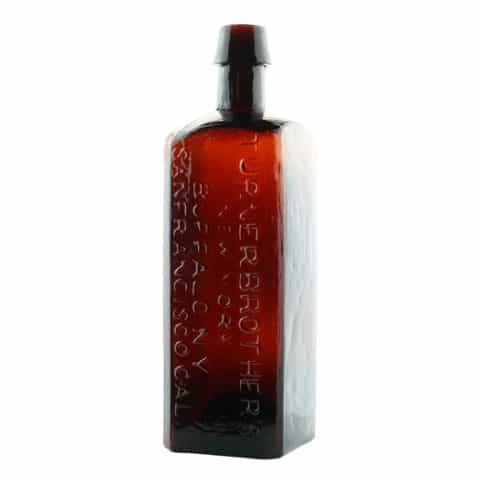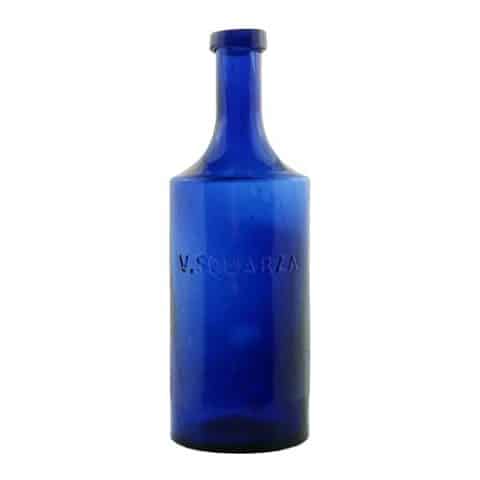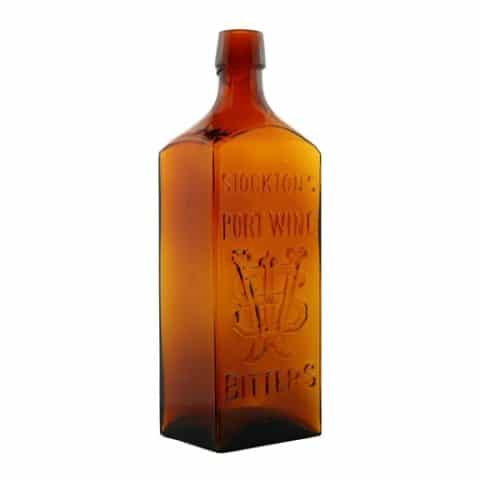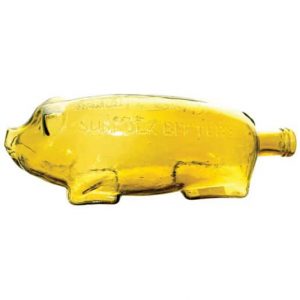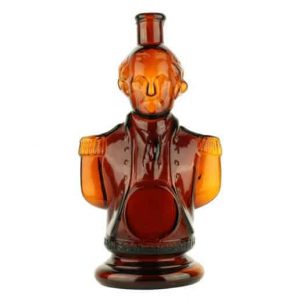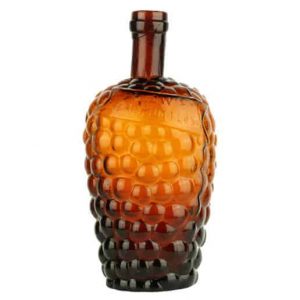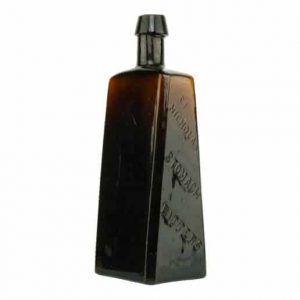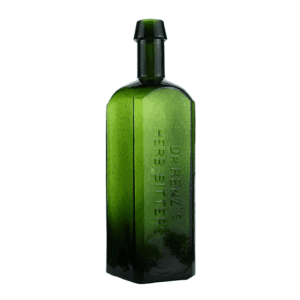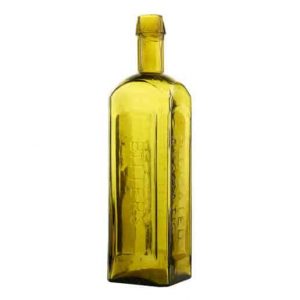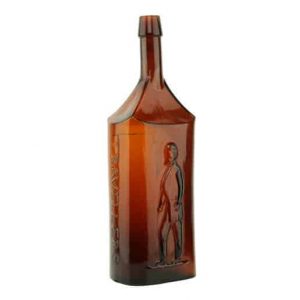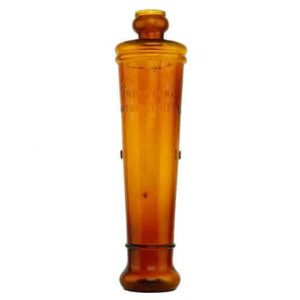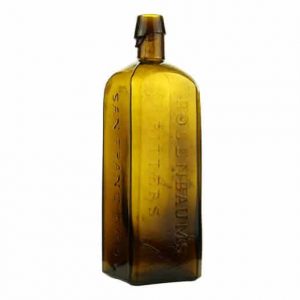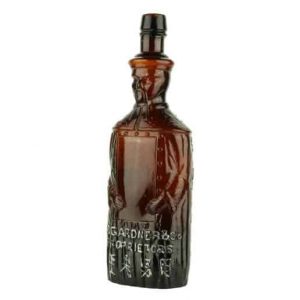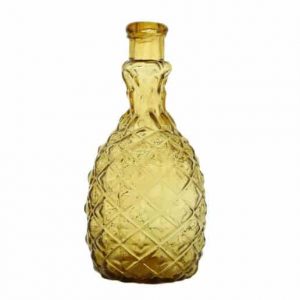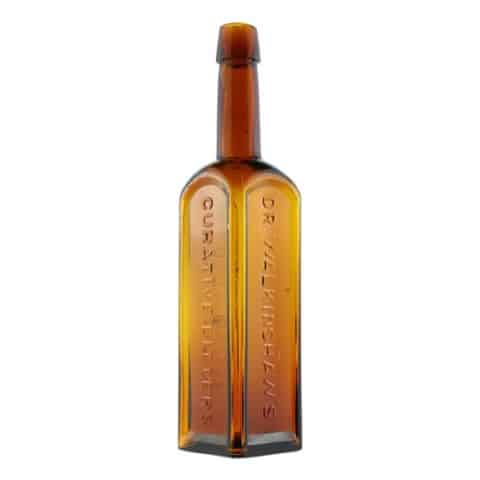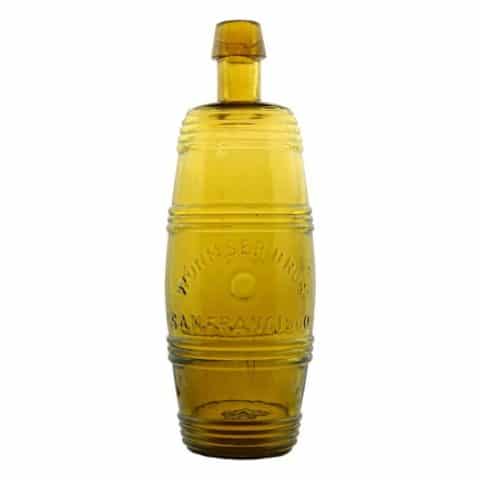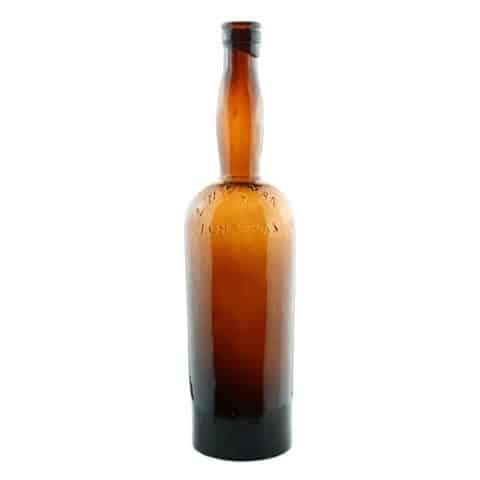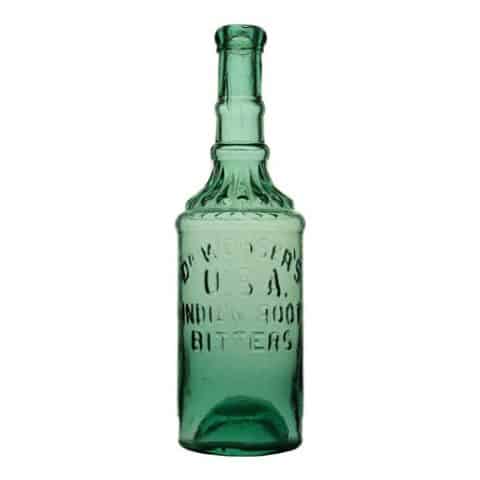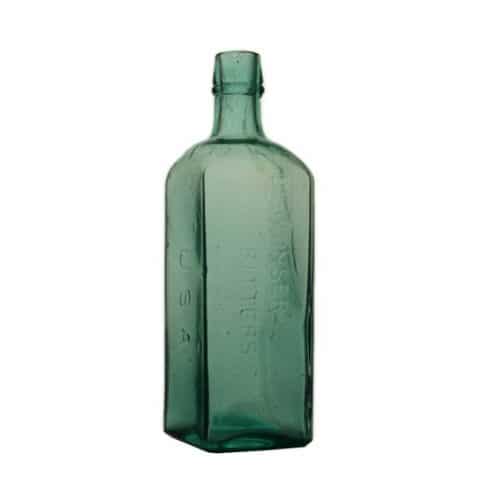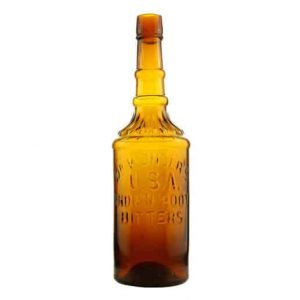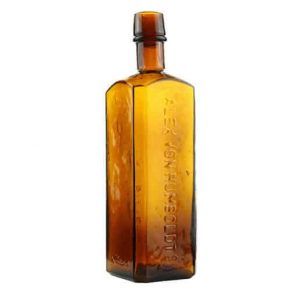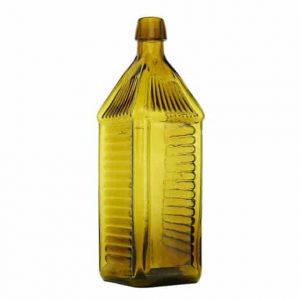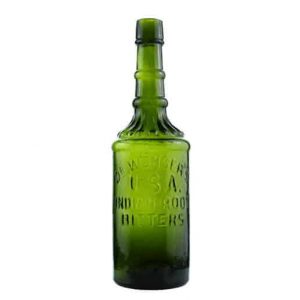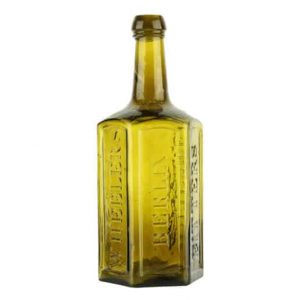Golden Eagle Bitters Dr. Wm. H Tutts
Dr. Wm. H. Tutt’s
Golden Eagle Bitters
T 71
Dr. William H. Tutt
Augusta, Georgia & New York City, N.Y.
Golden Yellow Amber Square
Provenance: Mike Newman Collection
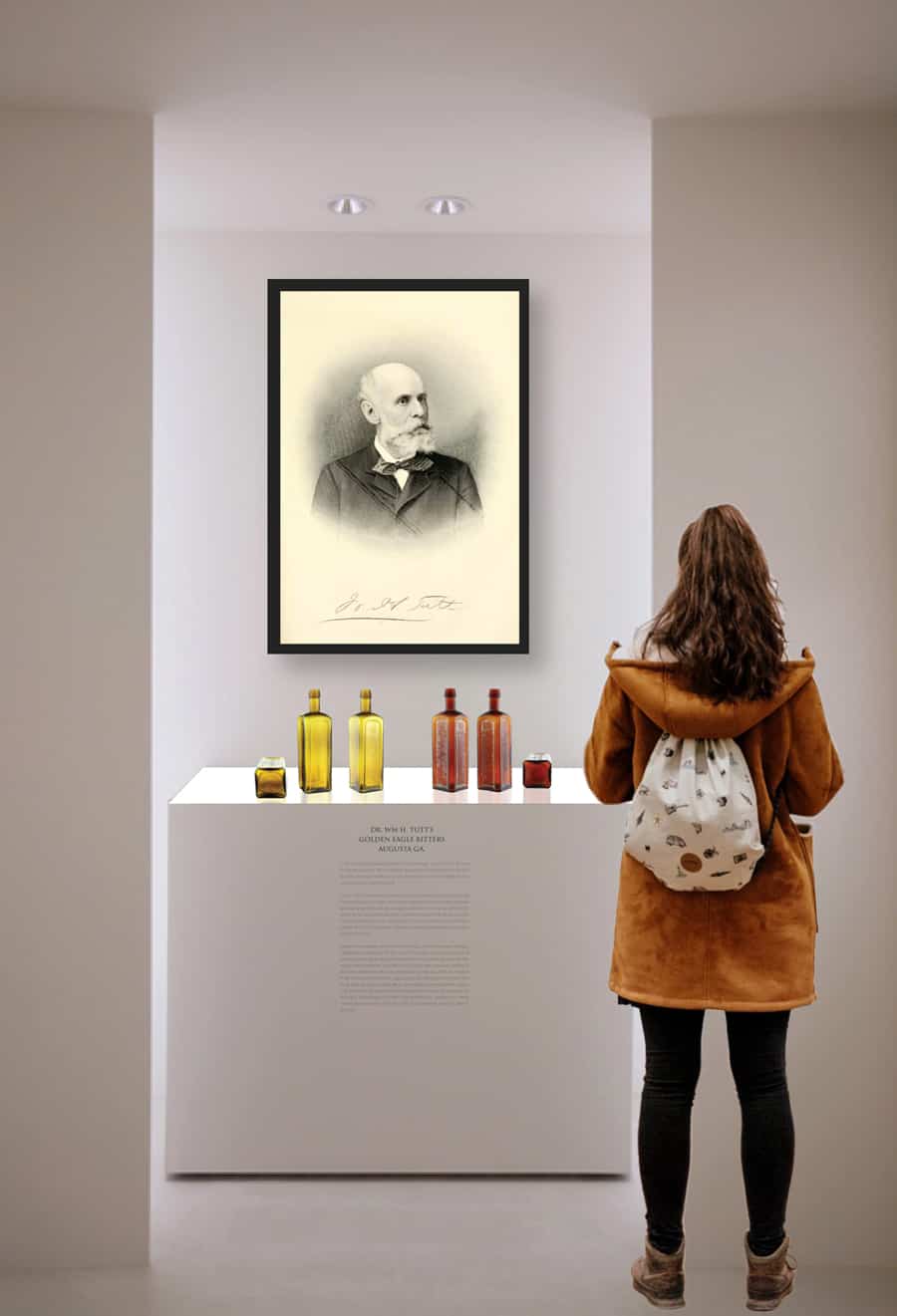
Our “Dr. Wm. H. Tutt’s Golden Eagle Bitters” (T 71) could be unique in this golden yellow-amber glass. The bottle, known in amber, is extremely rare, with only a half dozen or so examples reported in collections. There is an amber variant with the same embossed copy plus a third city-state side panel reading “Dr. Wm. H. Tutt’s Golden Eagle Bitters Augusta Ga.” Only one complete specimen exists, and it is also displayed in the Bitters Gallery.
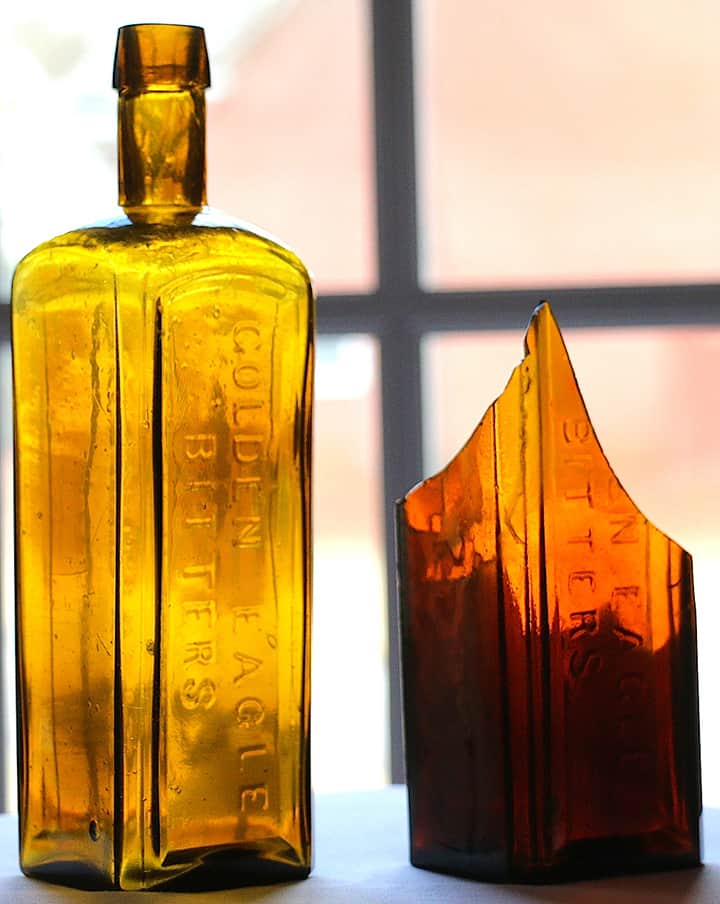
When we imaged the subject golden yellow-amber “Dr. Tutt’s Golden Eagle Bitters,” we noticed an amber, broken variant example next to the complete specimen. The consignor dug the base fragment for the embossed “Augusta Ga” (T 71.7) bottle many years ago and commented; “There is only one perfect example known, which was purchased for $4,000 over thirty years ago by Walter Smith. I had always assumed (incorrectly) that the only difference between the two was the city-state embossing on a third panel. After comparing them, I see that the embossed panels are in an entirely different order. It turns out that “Augusta Ga.” is embossed on the panel opposite the embossed “Golden Eagle Bitters,” panel where “Dr. Wm. H. Tutt’s” was embossed on my yellow-amber example. The “Dr. Wm. H. Tutt’s” embossing now shows up on the third panel between “Golden Eagle Bitters” and “Augusta Ga.” The variant without the embossed “Augusta, Ga.” typically comes in a medium amber color, with my golden yellow-amber example being the only one known in this color. I am guessing that maybe a half dozen undamaged examples are known without the city name. My bottle measures 9 ¼ inches in height with a 2 ½ inch square base. The neck is two inches long, which measures 7 ¼ inches from base to where the neck begins.” There in an applied tapered collar and a smooth base.
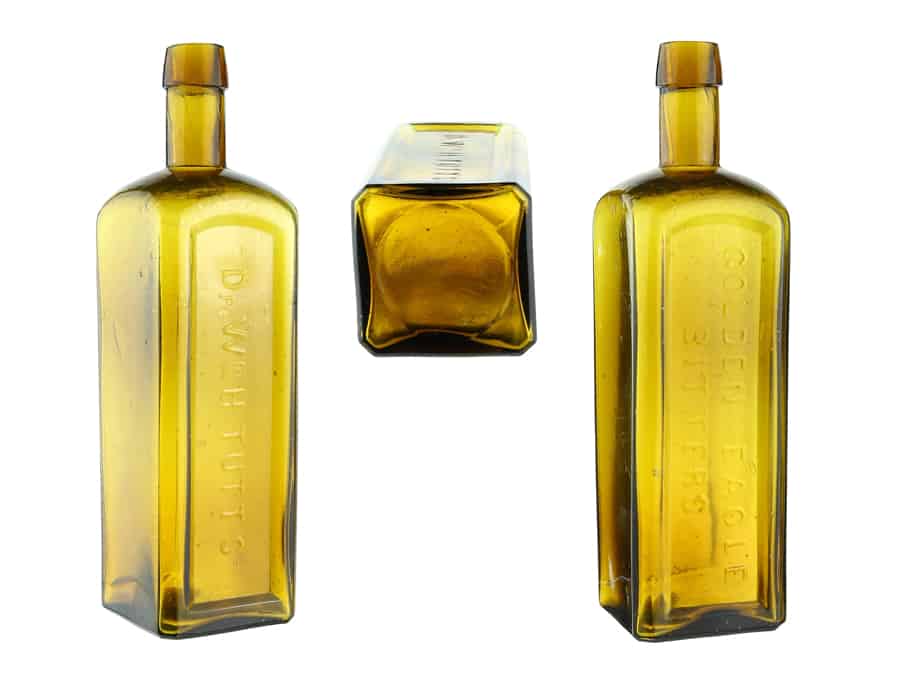
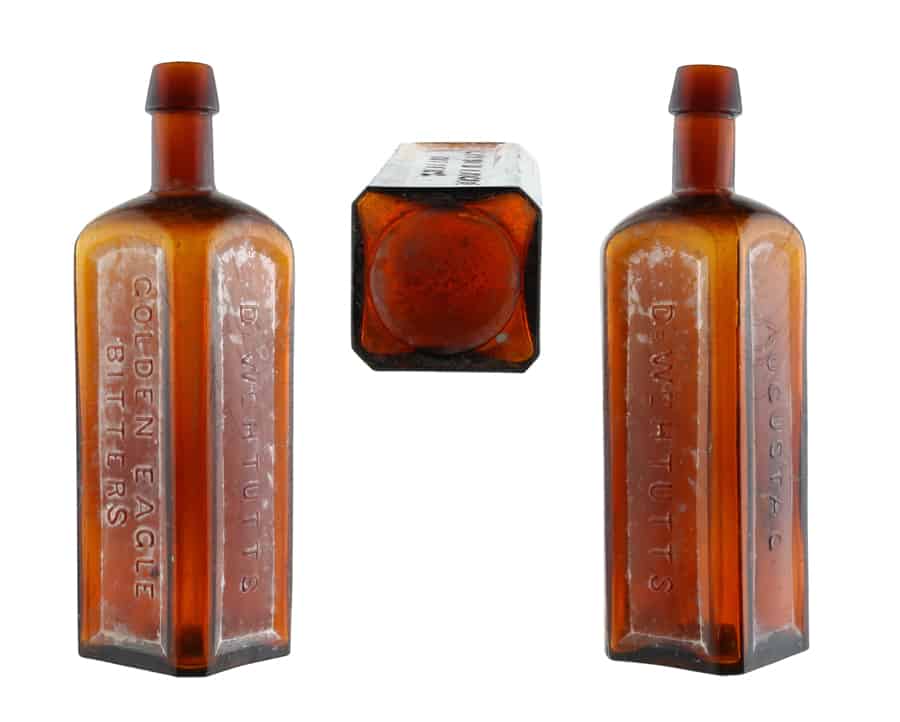
See the spinning museum example of “Dr. Wm. H. Tutt’s Golden Eagle Bitters Augusta, Ga.” in amber glass.
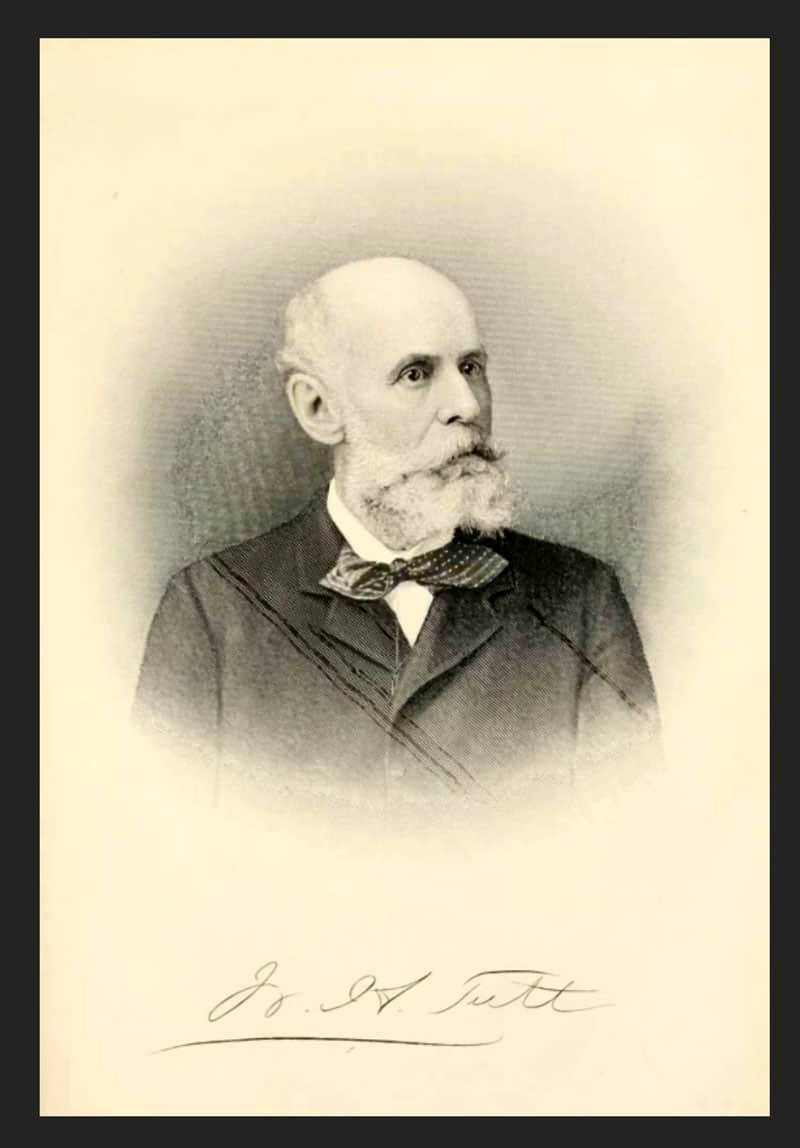
Dr. William H. Tutt
In 1845 Dr. William Henry Tutt started business in Augusta as a physician in what would be a long practice. For many years he held the position of Demonstrator of Anatomy in one of the best medical colleges in the United States and, for 25 years, made a special study of the liver and kidneys, the body’s most essential organs. In treating liver disorders, Tutt successfully prescribed the extract of a certain plant that is a perfect substitute for calomel and possessed all the virtues of that mineral without any harmful effects. He decided to put this remedy up in such a form as to place it within reach of all sufferers at a small cost, and Tutt’s popular liver pills were the outcome. Dr. Tutt initially selected only the Southern States for their sale, where they were used by almost everyone, even the best physicians prescribing them. The demand for his resources became such that he needed to move his Augusta laboratory to New York City to secure more extensive manufacturing and distribution facilities.
Dr. Tutt realized that there was more money to be made in pharmacy, particularly patent medicines. He also recognized the value of good marketing and was a heavy advertiser in national newspapers. Dr. Tutt became famous throughout the country and the world as the proprietor and manufacturer of Tutt’s Liver Pills, which he had painted on wooden fences, barn roofs, and often the sides of buildings. It is said that the first year Tutt was in New York, he expended over $25,000 in cash and advertising before he began to see any returns.
Dr. Tutt started his drug business in Augusta in 1850 and was associated with several Augusta partners. While Tutt was in New York, he retained his Augusta drug business as W. H. Tutt & Remsen. This was probably his wife’s father or brother, as Dr. Tutt married Miss Harriet Remsen Bell in 1847. Although most of Tutt’s concoctions appeared to be manufactured in his New York plant, many bear Augusta’s name, indicating brand recognition and strong personal ties with his place of birth.
The War Between the States broke out, and Dr. Tutt was stuck up north. When he heard rumors that folks back home thought he had become a Union booster, Tutt took a boat to Bermuda, ran the federal blockade to New Orleans, then took an overland route back home to Augusta. Like many others, he suffered financial losses, but the market for patent medicines returned, and so did his influence.
Tutt would take on Robert Henry Land as a partner as Wm. H. Tutt & Land – Druggists in late 1867. Dr. Tutt remained in the drug business until he moved back to New York City in 1873 and began manufacturing proprietary medicines on a more extensive scale. He would sell his concoctions by using well-placed advertisements for Dr. Tutt’s Liver Pills, Dr. Tutt’s Expectorant, Dr. Tutt’s Sarsaparilla and Queens Delight (subject), Dr. Tutt’s Improved Hair Dye and Dr. Wm. H. Tutt’s Golden Eagle Bitters, among others. Golden Eagle Bitters was advertised extensively in the South from early 1870 to 1873.

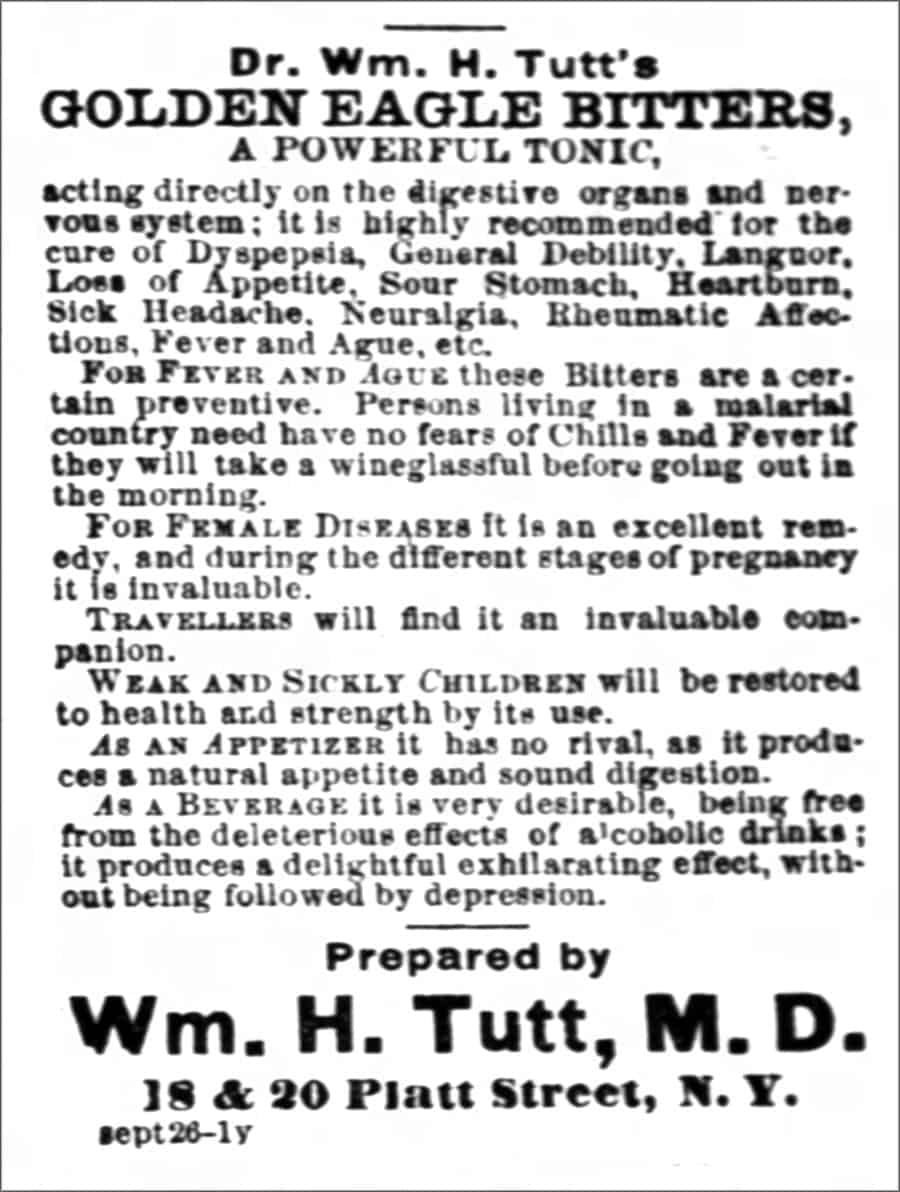
See the museum example of a “Georgia Bitters – Barrett Land & Co.” amber square.
See the museum example of a “Dr. Tutt’s Sarsaparilla & Queens Delight Augusta, Ga.” bottle.
Dr. Tutt moved his family back to Augusta in 1888 but continued his business in New York until he sold it in the mid-1890s for a fortune. He returned a wealthy man and spent the closing years of his life in comfortable retirement among the friends and scenes of his early life.
In the late 1860s, Tutt championed an ambitious civic plan to jump-start the city’s economy with a project to enlarge the Augusta Canal. Using his pre-war contacts in New York, he created a canal plan that impressed both public engineers and financiers. Many in Augusta considered the task too ambitious and blocked Tutt’s initiative. Tutt next devised a bold plan for a mechanical and agricultural fair. Although many of the same critics complained about its cost, Tutt got his way this time, and the fair that Augusta pulled off was considered one of the city’s success stories. Things went so well that Augusta revisited the canal expansion and pulled off that success.
The region’s economy improved, and toward the end of the century, northern tourists began to find Augusta a delightful place to avoid winter’s chill. That’s when Dr. Tutt conceived a plan for a grand hotel on a hill overlooking downtown Augusta. He found the right spot but also discovered that his new Summerville hilltop neighbors wanted something other than a hotel next door. He quietly began to acquire land, particularly the garden estate of Anna McKinne Winter, who wanted to move to a smaller place. At first, her old neighbors thought Tutt was replacing her house with a bigger, new one. Soon they realized nobody needed a home that big, and all they could do was watch while he constructed what became the Bon Air Hotel. Opened in 1889, the Bon Air not only brought tourists to town, it brought the new sport of golf, developing its own nearby course. So began Augusta’s golf tradition, which inspired the Master’s Tournament and continues enhancing the town’s reputation. Dr. Tutt died in 1898.
Primary Image: Yellow “Dr. Wm. H. Tutt’s Golden Eagle Bitters ” bottle and amber Dr. Wm. H. Tutts Golden Eagle Bitters Augusta Ga.” bottle imaged on location by Alan DeMaison, FOHBC Virtual Museum Midwest Studio.
Secondary Image: Amber Dr. Wm. H. Tutts Golden Eagle Bitters Augusta Ga.” bottle from the Walter Smith collection.
Support: Reference to Bitters Bottles Supplement 3 (BBs3) by Ring, Ham & Meyer.
Support: Reference to Golden Eagle Bitters – Augusta & New York, PeachridgeGlass.com, Ferdinand Meyer V, January 29, 2015
Join the FOHBC: The Virtual Museum is a project of the Federation of Historical Bottle Collectors (FOHBC). To become a member.

